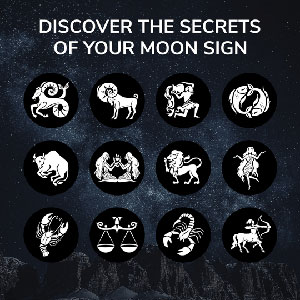Papal Conclave Underway: Cardinals Gather to Elect Successor to Pope Francis
Vatican City, May 8, 2025 – The world’s attention remains fixed on the Vatican as the Papal Conclave to elect a successor to the late Pope Francis continues. Following Pope Francis’s passing on April 21, 2025, the 133 cardinal electors are sequestered within the Vatican walls, deeply engaged in the sacred and secretive process of choosing the next leader of the Catholic Church.

Yesterday, May 7, marked the solemn commencement of the conclave. The day began with a profound Mass “Pro Eligendo Romano Pontifice” (For the Election of the Roman Pontiff) in St. Peter’s Basilica, a fervent invocation for the guidance of the Holy Spirit. Subsequently, the cardinal electors, clad in their scarlet robes, participated in a traditional and prayerful procession into the Sistine Chapel, chanting the “Litany of the Saints” and the inspiring hymn “Veni Creator Spiritus” (Come, Creator Spirit).
Upon entering the hallowed and artistically rich confines of the Sistine Chapel, each cardinal elector solemnly swore an oath of secrecy, pledging to uphold absolute confidentiality regarding all aspects of the conclave’s proceedings. Following this deeply personal and collective commitment, those not directly involved in the election were asked to depart, and the heavy wooden doors were locked, symbolically and practically sealing off the electors and marking the official commencement of the election.
The first round of voting took place yesterday afternoon. In accordance with centuries-old tradition, the outcome of this initial ballot was communicated to the eager world outside through the symbolic smoke signal emanating from the Sistine Chapel’s chimney. To the palpable anticipation of the thousands gathered in St. Peter’s Square, braving the Roman spring, and the millions more watching with bated breath across the globe, black smoke billowed from the chimney. This unmistakable sign indicated that no single candidate had yet achieved the necessary two-thirds majority of votes required for election.
Today, May 8, marks the second day of this pivotal conclave. The cardinal electors have reconvened within the sacred space of the Sistine Chapel to continue the weighty task of discernment and voting. The established rhythm of the conclave allows for up to four ballots each day – two conducted in the morning hours and two in the afternoon – until, by the grace of the Holy Spirit, one of the cardinal electors receives the support of at least 89 of their peers.
The atmosphere permeating Vatican City is thick with a profound sense of anticipation intertwined with fervent prayer. The global community of the faithful remains united in their vigil, awaiting the momentous signal of white smoke that will rise from the Sistine Chapel chimney, joyously announcing the election of the 267th successor to Saint Peter. This long-awaited sign will be immediately followed by the celebratory tolling of the bells of St. Peter’s Basilica, a sound that will resonate around the world.
This particular conclave carries significant historical weight due to the diverse composition of the College of Cardinals. The 133 cardinal electors represent a remarkable 70 different nations, a testament to the universal reach of the Catholic Church and Pope Francis’s deliberate efforts to foster broader global representation within the body of cardinals. A noteworthy demographic shift is evident in this conclave, as it marks the first time in history that less than half of the voting cardinals hail from Europe, underscoring the Church’s increasingly global character.
While the intense secrecy surrounding the conclave means there are no officially declared candidates, several prominent cardinals have been widely discussed as potential successors. These individuals, often referred to as “papabili,” include Italian Cardinal Pietro Parolin, the experienced current Secretary of State; the respected Filipino Cardinal Luis Antonio Tagle; and the influential Hungarian Cardinal Peter Erdő, among other distinguished figures within the College. It is significant to note that the vast majority of the current voting cardinals were appointed by Pope Francis himself, potentially suggesting a collective inclination towards continuing his pastoral vision and priorities for the Church.
The entire conclave unfolds within an environment of stringent security and absolute secrecy. Upon entering the conclave, the cardinals surrendered all electronic communication devices, and sophisticated signal-jamming technology is employed within the Vatican to prevent any unauthorized communication with the outside world, ensuring the integrity and freedom of the electoral process from any external pressures or influences.
The precise duration of this conclave remains inherently uncertain. While some observers speculate on a relatively swift election, historical precedent reminds us that papal conclaves can vary considerably in their length. For instance, Pope Francis himself was elected on the fifth ballot on the second day of the 2013 conclave, whereas his predecessor, Benedict XVI, was elected after four ballots spanning two days in the 2005 conclave. Other conclaves in history have extended for days or even weeks.
As the cardinal electors continue their prayerful deliberations and balloting under the awe-inspiring gaze of Michelangelo’s timeless frescoes in the Sistine Chapel, the world remains poised in a state of profound anticipation, awaiting the momentous announcement of the next leader of the Catholic Church. The ultimate outcome of this sacred conclave will undoubtedly shape the future trajectory of the Church and its multifaceted role on the global stage.
Historical Significance of Papal Conclaves: Frequently Asked Questions
Q: What is a Papal Conclave? A: A papal conclave is a meeting of the College of Cardinals convened in the Vatican City to elect a new Pope, the Bishop of Rome and the leader of the Catholic Church, following the death or resignation of the previous Pope. The term “conclave” literally means “with a key,” referring to the historical practice of locking the electors in seclusion to ensure the integrity and independence of the election process.
Q: Why is the election held in secrecy? A: The tradition of secrecy surrounding the papal conclave dates back centuries and is intended to protect the cardinal electors from any external pressures, influences, or intimidation. This secrecy allows them to prayerfully and freely discern God’s will for the Church without fear of reprisal or lobbying from outside entities. The oath of secrecy taken by each cardinal underscores the gravity of this commitment.
Q: Who is eligible to vote in a Papal Conclave? A: Only cardinals of the Catholic Church who are under the age of 80 on the day the Apostolic See becomes vacant (i.e., the day the Pope dies or resigns) are eligible to participate and vote in a papal conclave. Currently, there are 133 cardinal electors eligible for this conclave.
Q: How is a Pope elected in a Conclave? A: The election process involves multiple secret ballots. A cardinal needs to receive a two-thirds plus one majority of the votes of the cardinal electors present to be elected Pope. If no candidate receives the required majority in the initial ballots, voting continues for a specified number of rounds. If a deadlock occurs after a certain period, the rules allow for alternative methods of election, although these are rarely invoked.
Q: What is the significance of the smoke signals? A: The smoke signals from the Sistine Chapel chimney are the traditional way of communicating the outcome of each ballot to the outside world. * Black smoke (“fumata nera”) indicates that no candidate has received the necessary two-thirds majority, and voting will continue. This black smoke is traditionally produced by burning the paper ballots along with straw or a chemical additive. * White smoke (“fumata bianca”) signifies that a Pope has been successfully elected. This is achieved by burning the ballots alone, often with the addition of a white chemical. The appearance of white smoke is followed by the ringing of the bells of St. Peter’s Basilica, confirming the news.
Q: How long do Papal Conclaves typically last? A: The duration of a papal conclave is unpredictable and can vary significantly. Some conclaves have lasted only a few days, while others have extended for weeks or even months in the past. The length depends on the time it takes for the cardinal electors to reach a consensus on who they believe God has chosen to lead the Church. In recent history, conclaves have tended to be relatively short.
Q: Why is the election held in the Sistine Chapel? A: The Sistine Chapel, with its breathtaking Renaissance art, serves as a sacred and neutral space for the cardinal electors to undertake their solemn duty. Its enclosed nature further reinforces the seclusion and focus required for the election process. The presence of Michelangelo’s masterpieces serves as a constant reminder of the weight of history and the spiritual significance of their task.
Q: What happens after a Pope is elected? A: Once a cardinal has accepted the election, he chooses his papal name. The Dean of the College of Cardinals then asks, “What name do you wish to be called?” Following the acceptance and the choice of name, the newly elected Pope is no longer secluded. He is presented to the world from the balcony of St. Peter’s Basilica with the traditional announcement “Habemus Papam!” (“We have a Pope!”). He then imparts his first apostolic blessing, “Urbi et Orbi” (to the city and to the world).
Read More:
Why Subway Shuttered Over 600 U.S. Outlets in 2024—Smart Growth or Struggle?
Black smoke signals end of first day of conclave


